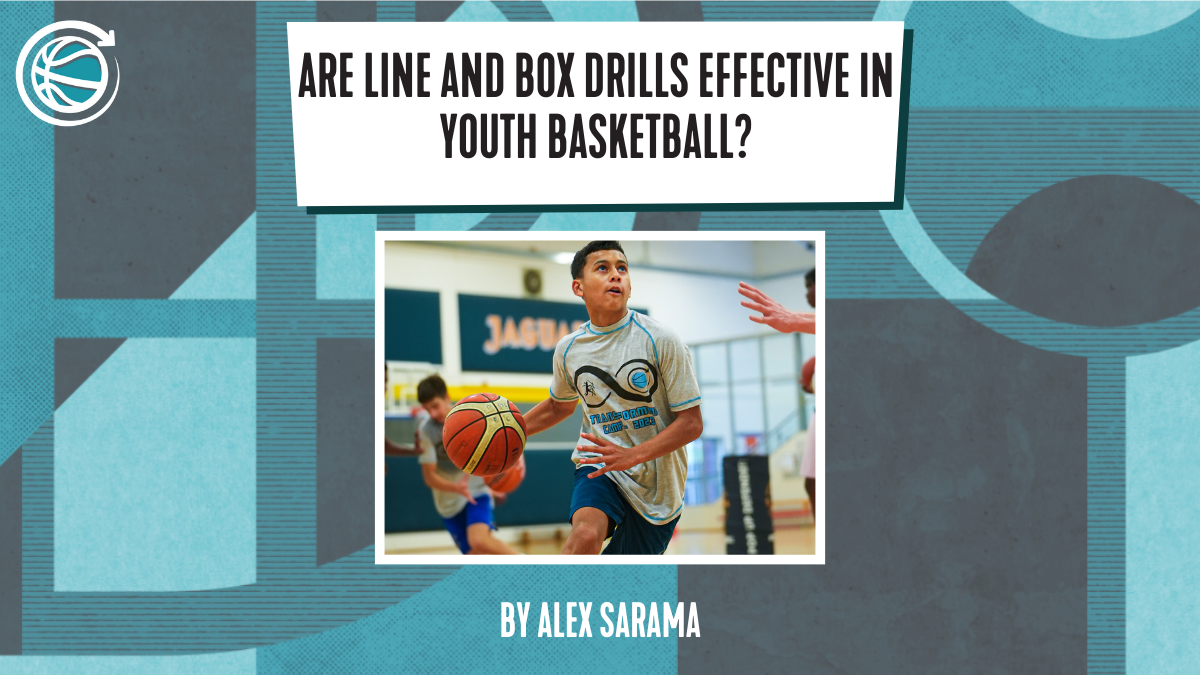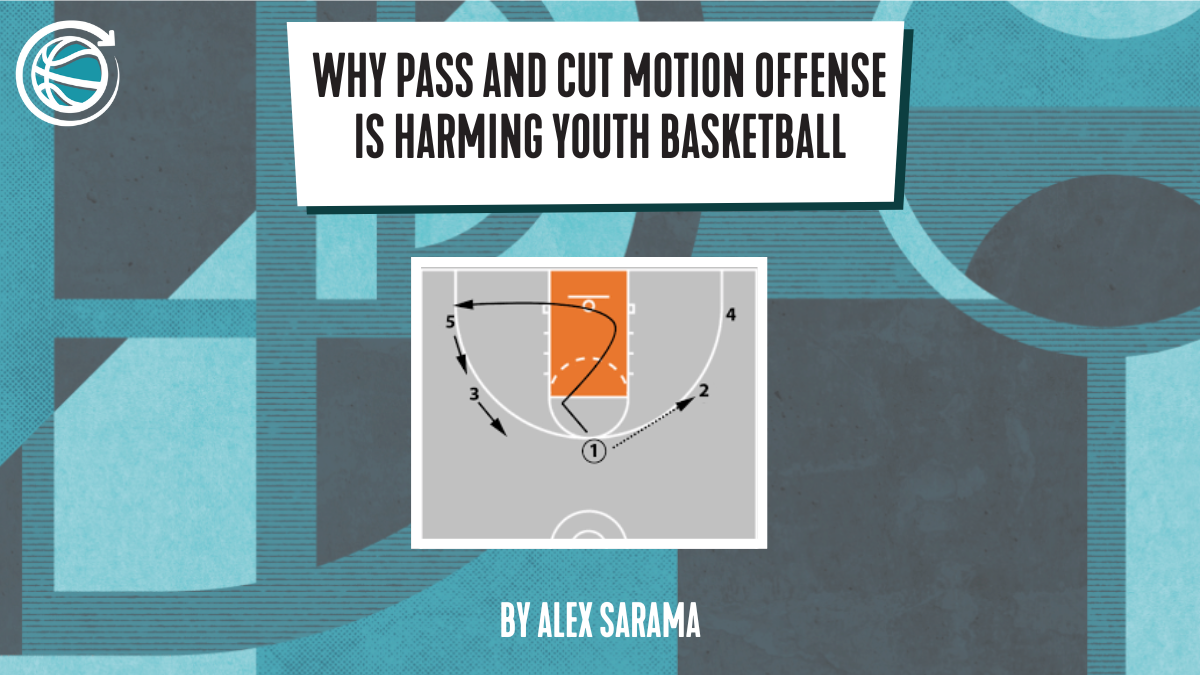Are Line and Box Drills Drills Really Effective in Basketball Practices?
Every year ‘Line and Box Drills’ do the rounds on Basketball X. These are viewed as fundamental drills which should supposedly be a staple of every youth basketball practice. This article is not an attack or criticism of the coaches that do these drills; the coaches that run these drills have a great knowledge of the game and ideas which everyone can benefit from. This article is written simply to get people thinking differently and ask the question “is there a better alternative” with the research we have available on how athletes become more skilful.
When we look at the practice environment, the aim of most practices (especially at the youth level) should be to maximise on transfer from the practice to competition environment. We must therefore consider as to whether or not what is taught within these drills shows up within 5-on-5 play.
Within Line and Box drills, both drills are extremely closed environments which lack the specifying information found in the game (e.g. teammates moving in variable manners and defenders). The movements themselves – particular types of pivots and passes – are pre-determined by the coach. There is little to no variation, and the techniques are repeated always from the same locations. In practice, this means the following:
- There may be short-term practice improvement, but this does not mean that players will be effective using these taught techniques within a more chaotic and complex environment
- This means there is limited transfer to the game, which has little to no impact on the ability of the players to pivot and pass when faced by the presence of a live defender.
The footwork techniques which these drills aim to develop are no doubt extremely important for players of all levels. I fully agree with the coaches that stress the importance of footwork, pivoting, passing etc. The issue however is that these drills do not actually develop the footwork skills required by a player when attempting to keep the ball away from a defender in a 5-on-5 game. Players therefore perform the moves within these drills without even understanding why they are doing them.
As coaches, it seems obvious to us that we know why a player would pivot. But does a 10 year-old, with a limited understanding of basketball, understand why they would dribble out, stop, turn back in the direction which they just came from? Furthermore, when would they ever make a straight line pass to a teammate without defense? Coaches often say these drills are building blocks and must be mastered before demonstrating more complex solutions. The simple answer to this is play ‘piggy in the middle.’ See what emerges within a simple 2-on-1 activity as players explore functional passing solutions that are far more similar to what we see within the game. Even an eight year old can do this with the right constraints (e.g. smaller ball, defense can only play with one hand etc).
Learn more about how to use the CLA with beginners…
So what is this alternative? I do not want to point out the flaws in one approach without offering a potential solution. Playing against a defender through a constrained 1-on-1, 2-on-1 or 2-on-2 activity allows for functional movement solutions to be developed in relation to footwork and pivoting. Furthermore, there is a good level of action fidelity from the activity (i.e. the way the players pivot and pass will be far more similar to how they move within 5-on-5).
DOWNLOAD OUR PLAYER DEVELOPMENT SSGs BOOK
An example of the task constraints for a 1-on-1 practice activity could be as simple as the offense self-passing the ball out from under the basket, with a live defender following. When the offense catches the ball, they play a live 1-on-1 with a five second clock, always starting from different locations. The box drill inspired this activity, and with a little bit of tweaking, we are now left with a highly effective task that transfers to the game. Players will not all move in the same way, but explore different solutions. This can even be cued by the coach (e.g. stay for three reps, you must pivot a different way every time otherwise it’s a turnover). Try this even with 10 year-olds, and you will see reverse and forward pivots emerge without players knowing what they are doing. This implicit learning is exactly what we want to lead to practice transfer.
What if this task is too challenging? Simply constrain the defense. E.g., the defender only has two steps they can use when the offensive player pivots. This is still keeping key information from the environment, without decomposing the task. Within the CLA, this is what we call “task simplification.” Finding creative ways to simplify without removing key specifying information is the hallmark of a creative coaching.
Many years ago when legendary college coaches developed these drills, we were not able to benefit from evidenced-based coaching ideas. Ecological dynamics and the CLA simply did not exist in the 1970’s! However, in 2024 this is no longer the case. We have an abundance of evidence-based ideas informing us of how basketball players can improve more effectively, and we need to incorporate these into our coaching to avoid relying on hand-me-down coaching methods. Coaches of all levels should start to combine their experience and knowledge of the game with the empirical evidence which exists, as opposed to merely relying on practical knowledge. This is one reason box and line drills continue to be so popular.
I personally do not use these drills, even for warm-ups, because I do not think they are enjoyable for players or contain any relevance to what happens in the game. When in a game does a player start from the sideline, dribble out, jump stop, pivot and pass back to the direction in which they just came from? Additionally I would want my players to be attuned to acting on the relevant affordances (opportunities for action) which appear when dribbling, pivoting and passing, which come about from perceiving the defense and acting on the different ways to exploit space and create an advantage.
I fully understand that coaches will not agree with this article. Coaches will always be entitled to their own opinions on the matter. We merely wanted to highlight why we believe there are far better ways to develop footwork, passing and pivoting with youth players. For those who may still be skeptical, all we say is give it a try and see what happens!

Jul 15, 2024
Alex Sarama



